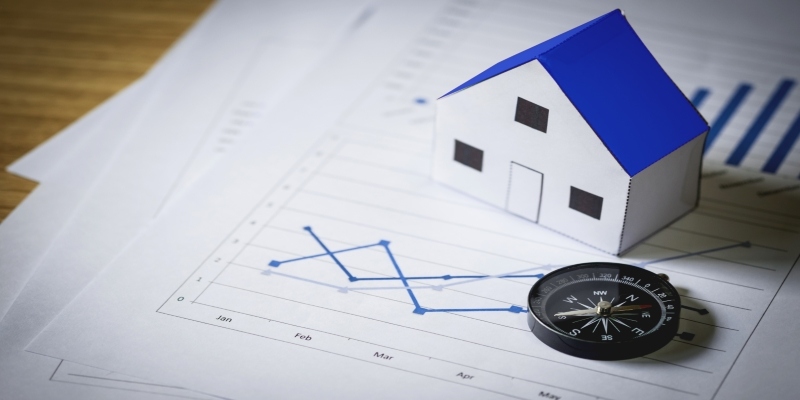What Are The Causes and Factors Behind High Inflation Rates Worldwide
Dec 15, 2023 By Triston Martin
The economic landscape transformed significantly after the 2008 financial crisis and the Great Recession, marked by low interest rates and minimal inflation. However, this changed dramatically around 2021 as inflation rates surged worldwide, reaching a peak in the United States in 2022, the highest in several decades.
Inflation
Inflation refers to the general increase in prices across an economy. Recently, it has become a significant global concern, threatening economic stability. Inflation implies that as prices increase, the purchasing power of money decreases, leading to a cycle where demands for higher wages can further fuel inflation. Rapid price increases can disrupt the economy's fundamental operations. For instance, during hyperinflation, people may rush to spend their income immediately to avoid higher future prices.
Causes of Inflation

Inflation fundamentally arises from an imbalance where demand exceeds supply. According to New York Federal Reserve experts, 40% of the 2021 price increase was related to supply-side concerns and 60% to demand.
- Supply Shocks: Disruptions in key economic inputs, like energy, can trigger inflation. Conflict-related oil production cuts may raise energy costs, which increases the prices of other items, causing "cost-push inflation." The inflation spike observed in the past few years is likely due to supply and demand factors. From the supply perspective, the COVID-19 pandemic caused significant disruptions, such as shipping delays and workforce shortages.
- Money Supply: Money supply increases demand and inflation. Consumers with more excellent money might want more products and services, which can raise prices without an increase in supply. This is often described as "demand-pull inflation." On the demand side, the response to the pandemic played a role. Governments injected substantial funds into economies to support households and businesses during lockdowns and layoffs. This increased money supply and heightened demand for physical goods (as people had more disposable income and limited options for spending it on services) likely contributed to the inflation surge.
- Expectations and Spirals: Unexpected money supply shifts may cause inflation. Unexpected money supply increases might upset the supply-demand equilibrium. Inflation expectations matter, too. If people anticipate higher inflation, they may seek higher wages, leading to a potential cycle of wage and price increases, though such spirals are relatively rare.
Unemployment and Inflation
Inflation fundamentally arises when demand exceeds supply. To understand this better, consider the concept of 'economic slack.' This refers to the untapped potential in an economy, including unemployed workers, idle factories, and underused resources. Post-2008 financial crisis, many countries experienced high unemployment, signifying considerable economic slack. In such situations, increased demand can be met by employing these unused resources, thus mitigating inflation risk.
In contrast, inflation risk intensifies when an economy operates near its total capacity with minimal slack. This often correlates with low unemployment rates. With most people employed, workers have more leverage to demand higher wages, which can contribute to rising prices. Additionally, with fewer unemployed workers available, meeting any surge in demand becomes challenging, leading to a scenario where excess money chases limited goods.
Interest Rates as a Tool to Combat Inflation
Central banks, recognizing the importance of managing inflation, often set inflation targets. They use interest rates to regulate price increases at a manageable rate. The U.S. Federal Reserve wants a 2% yearly price growth. When inflation rates are high, they may increase target interest rates. Higher interest rates make loans more expensive, reducing consumer and business spending thereby curbing demand.
US Federal Reserve uses 'open market operations' to affect interest rates. The Fed regulates money supply and short-term interest rates by buying and selling bonds and other assets after the Federal Open Market Committee establishes a target interest rate.
Inflation Measurement
Inflation measurement involves tracking changes in the price levels of various goods. CPI, which tracks the average price change of a "basket" of household goods and services, is a popular metric. This basket is weighted based on typical consumer spending patterns. A rise in the CPI indicates an increase in the cost of living in households.
Economists often focus on "core CPI," which excludes food and energy prices due to their volatility. These prices fluctuate more dramatically and frequently than others, so removing them provides a clearer view of underlying inflation trends.
Forecasting the Decline of Inflation

Predicting the exact timeline for inflation reduction is challenging, but various forecasts offer some insights:
- The Federal Reserve projects that inflation will reach its highest point in 2022, then decline in 2023, and then return to 2% in 2025.
- Global inflation will reach its high in the fourth quarter of 2022, according to experts at Morgan Stanley.
- Core PCE inflation is projected to decline from 5% to 3% in 2023, according to experts at Goldman Sachs.
Strategies for Managing Through Inflation
Effective management during inflationary periods involves several considerations:
- It's crucial to have a clear policy for adjusting prices. Mark Bergen from the University of Minnesota and his colleagues suggest minimizing the costs associated with changing prices, known as "menu costs," which can accumulate over time. Carefully consider your pricing strategy. Raising market prices could be an obvious response to inflation but should be done carefully so as not to lose customers. For example, small incremental price hikes may sometimes be preferred by consumers to a big jump at once.
- Open communication with employees becomes even more essential during inflation, especially considering the tighter labor market. Retaining key staff members can be challenging, as funding costs may increase due to rising interest rates.
- As central banks combat inflation by increasing interest rates, companies should adapt their strategies and operations accordingly. Higher borrowing costs and a shift in investor focus towards short-term profits are typical outcomes of increased interest rates. Businesses must navigate these changes strategically to manage effectively during these economic conditions.
- Relying on a single supplier or a limited geographical area for materials can be risky during inflationary periods. Diversifying suppliers helps mitigate these risks. This might mean sourcing from different countries or investing in local suppliers to reduce dependence on international markets, which can be more volatile.
-
 Investment May 20, 2024
Investment May 20, 2024What is Indexed Universal Life Insurance: Pros and Cons
The IUL offers complete stability with flexibility for you, and here is how the indeed universal life insurance works.
-
 Investment May 20, 2024
Investment May 20, 2024What is Debt Consolidation and is it a Good Idea?
Learn how to make informed decisions for your financial future by knowing what is debt consolidation and how it works
-
 Investment Dec 23, 2023
Investment Dec 23, 202310 Common Repairs You Need to Handle in Your Rental
Discover the repairs tenants should handle themselves. Learn when it's your duty, not your landlord's, to fix common issues in your rented space.
-
 Investment Dec 20, 2023
Investment Dec 20, 2023Absorption Rate in Real Estate: A Practical Guide
Unlock the secrets of real estate absorption rates and master the art of effective measurement for strategic decision-making.
